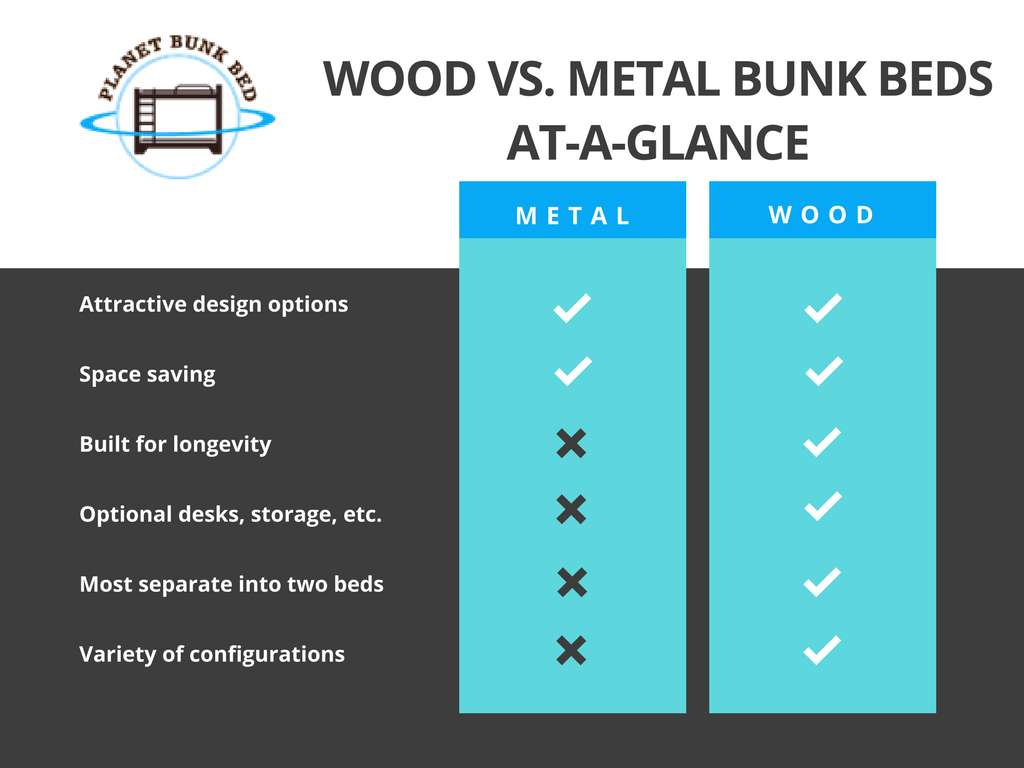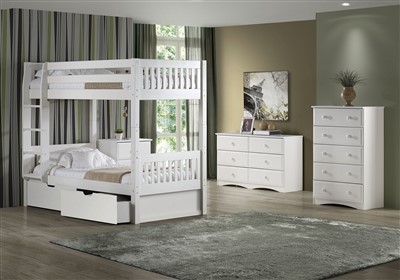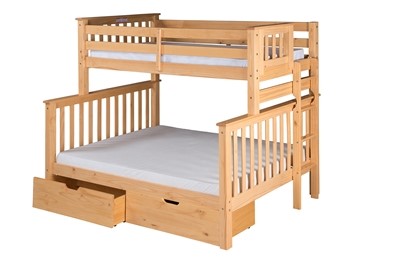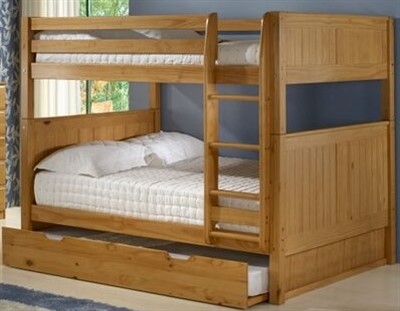|
Bunk Bed Materials Buying Guide
With so many options available, choosing the type of material for your children’s bunk bed can be difficult. In this bunk bed material buying guide, we’ll walk you through the different types of materials so you can decide which is right for your family. Wood Bunk Beds vs. Metal Bunk Beds
The majority of bunk beds are constructed from either wood or metal. Although wood bunk beds are the most common, metal bunk beds are gaining popularity. This is largely because they are typically less expensive than their wood counterparts and provide a more modern look. Wood bunk beds may be more expensive, but they have a higher-quality look and feel, and provide more versatility. It’s easy to create a customized room for your children with a wood bunk bed. Many wood bunk beds have optional features, such as storage and desks, which typically aren’t available with metal bunk beds. Wood bunk beds also have a better variety of configurations and sizes available.
You’ll also get better long-term flexibility with wooden bunk beds. Even though your children may love the idea of bunk beds now, chances are that as they grow, they will want their own space. Fortunately, most wood bunk beds, including the bunk beds we offer, can be separated into two separate beds so you won’t need to buy another bed later on. When it comes to choosing a bunk bed for your children, metal bunk beds are a good short-term solution. If you need a bunk bed that will stand the tests of time, wood bunk beds are long-lasting and will give you the most value for your dollar. How durable is the wood?
If you decide a wood bunk bed is right for your family, keep in mind that not all wood is created equally. Many bunk beds advertised as wood are actually particle board, multiple density fiber-board (MDF), or another engineered wood product. These types of materials are common, but they lack the durability and strength solid wood provides. Particle board, for instance, is made by gluing together wood chips, saw mill shavings, and sawdust. This type of material will wear down over time, especially if it’s exposed to moisture. Although MDF will hold up better than particle board, it is still no match for solid wood. What’s in the wood?
The real problem with engineered wood products is that they contain volatile organic compounds (VOCs). Studies have shown that indoor exposure to VOCs have a negative effect on respiratory health, especially in children under 17. These materials also contain formaldehyde, a potential carcinogen which has been proven to emit fumes in the home environment. This toxin has been associated with nasal and brain cancers and may put your children at risk for allergies, asthma, and more. With a solid wood bunk bed, you can be sure your children are protected. At Planet Bunk Bed, we only carry high quality beds constructed with durable Brazilian Pine. The wood we use comes from renewable plantations which help protect the rain forests in Brazil. We keep our beds environmentally-friendly and non-toxic so you can keep your children healthy. Find out more about Planet Bunk Bed’s commitment to quality. Final bunk bed material considerationsThere are many bunk bed materials to choose from. Some materials, such as metal and engineered wood products, are less expensive, but come at a cost. A high-quality, solid wood bunk bed will provide the best long-term value and ensure your children stay safe and healthy. Check out our top-quality, non-toxic bunk beds for your children’s room.
Sources: http://www.sciencedirect.com/science/article/pii/S0269749114003121 https://www.ncbi.nlm.nih.gov/books/NBK138711/ http://www.oprah.com/health/are-toxins-in-your-furniture-making-you-sick |



